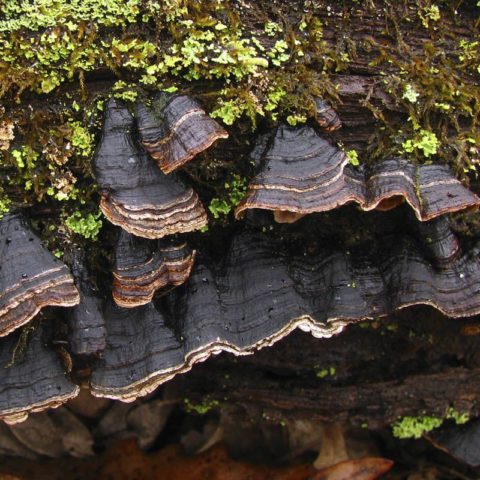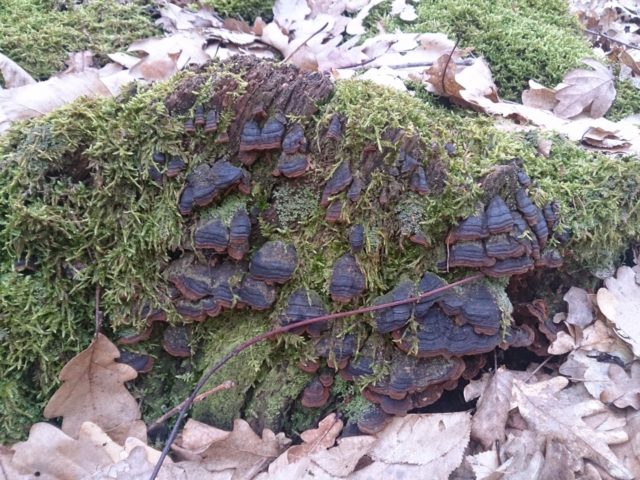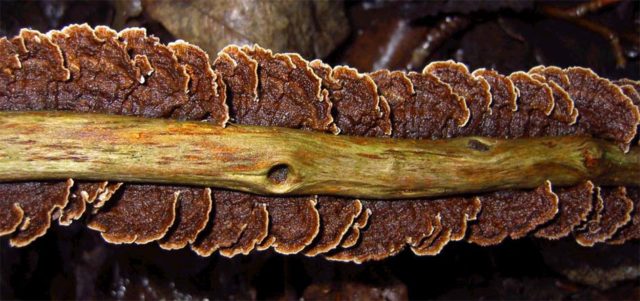Content
Hymenochete red-brown, red-rusty or oak is also known under the Latin names Helvella rubiginosa and Hymenochaete rubiginosa. The species is a member of the large Gimenochet family.

The biological cycle of the species is one year
What does the hymenochete red-brown look like
At the beginning of the growing season, the caps of the red-brown hymenochete are pressed against the surface of the substrate. Then the fruiting bodies rise, take the form of open, sessile fruits with a tiled arrangement on the surface of the wood.
If the mycelium is on a standing stump, the mushrooms resemble a lowered fan or shell. On the underside of a felled tree there are rubbery ones, with a variety of non-repeating shapes.
The external characteristics of the red-rusty hymenochete are as follows:
- fruit bodies are thin - up to 0.6 mm, rigid dense woody structure;
- the surface with radial stripes is much darker than the main background;
- the color of the fruit bodies is uniform to the edge, it can be steel or brown;
- one or more light lines of different widths are located along an even or wavy edge;
- the surface of the caps is furrowed, velvety at the beginning of growth, then smooth, and at the end of the biological cycle it becomes glossy;
- hymenophore with chaotically scattered tubercles;
- in young specimens, the color is orange, with age it becomes reddish-brown or lilac, closer to the edge, the color is always much lighter.
The pulp of a red-brown hymenochete is brown with a gray tinge, without taste or smell.

Fruits are found both on horizontally and vertically arranged wood.
Where and how it grows
The mushroom is cosmopolitan, without the boundaries of the main cluster. In Russia, it can often be found in mixed forests and oak forests. Saprotroph parasitizes on decaying oak wood. Bears fruit in temperate climates from early summer to winter. In the southern regions, the red-brown hymenochet can grow until the next season. The mycelium causes the spread of dry rot.
Is the mushroom edible or not
The structure of the hats is very rigid at any stage of development. The fabric is thin, tasteless, odorless. Cannot be used as a raw material for culinary processing.
Doubles and their differences
The hymenocheta tobacco is considered a double. It differs in a lighter color, as well as a leathery, rather than woody structure of the fabric. Accumulating fruiting bodies can occupy a large area in the form of a solid line, causing white rot. The double is inedible.

Parasitizes on dead wood of any hardwood
Conclusion
The red-brown hymenochete has a one-year development cycle; it grows only on dead wood, stumps and rotting oak branches. The hats are hard with a dense structure, do not represent nutritional value. There is no information about toxins in the composition, the hymenochete belongs to inedible mushrooms.








